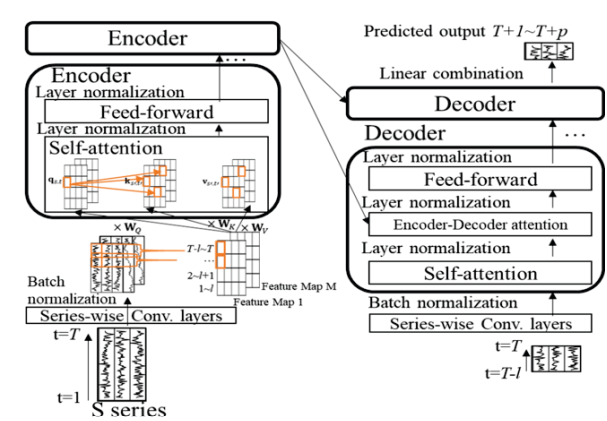Modeling Extreme Events in Time Series Prediction
Extreme Value Loss (EVL)解决长尾分布
记忆网络记忆历史中的极端事件,如自然灾害和经济危机。
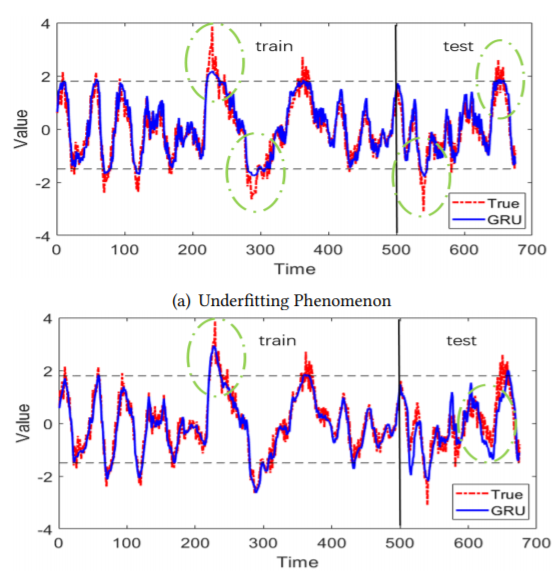
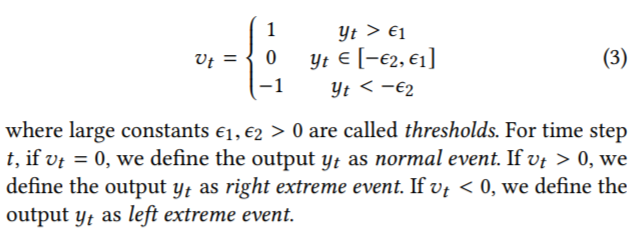

RobustSTL: A Robust Seasonal-Trend Decomposition Algorithmfor Long Time Series
回归+最小绝对误差 解决trend分解
STL不灵活,季节性特征shift,不适合长季节周期

常见的降噪方法是Low-pass filter、移动平均、高斯滤波
STL不灵活,季节性特征shift,不适合长季节周期
噪声项:使用bilateral filtering降噪
趋势项:假设趋势项主导时间序列,重构误差+平滑约束
周期项:不固定周期,考虑2H+1窗口内
STFNets: Learning Sensing Signals from the Time-Frequency Perspective with Short-Time Fourier Neural Networks
谱操作可分为三类
- filtering:全局模式匹配
- convolution:局部特征
- pooling:降维
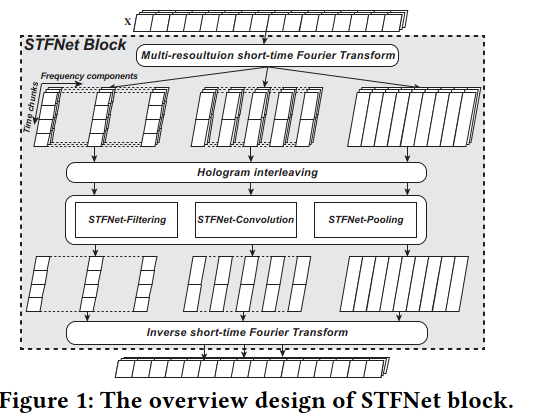
TiSSA: A Time Slice Self-Attention Approach for Modeling Sequential User Behaviors

GRU中加了时间间隔项

Feature Fusion:

N-BEATS: NEURAL BASIS EXPANSION ANALYSIS FOR INTERPRETABLE TIME SERIES FORECASTING
DL和统计模型混合效果好
2H-7H去预测H长度
可解释性:
Trend:多项式拟合
Seasonal:傅里叶级数拟合

DATA-GRU: Dual-Attention Time-Aware Gated Recurrent Unit for Irregular Multivariate Time Series
varying time intervals→Time-Aware
Gated Recurrent Unit (DATA-GRU)
missing
values→dual-attention
unreliability-aware attention mechanism to adjust weights assigned to different data to ensure high-quality data play important roles to promote prediction performance while the influence of low-quality data is limited.
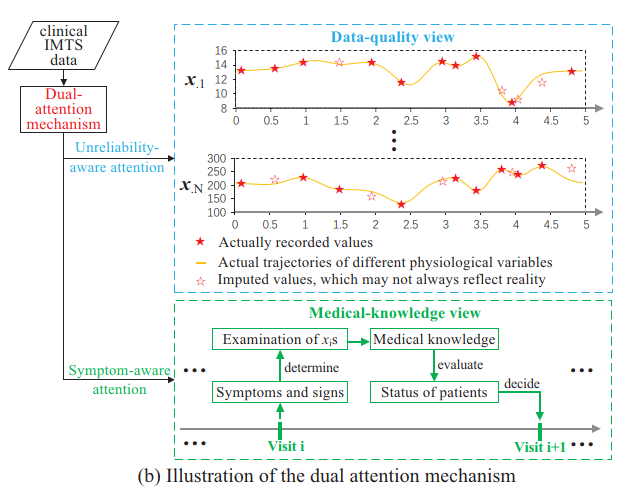
Time Interval Aware Self-Attention for Sequential Recommendation
they model the time-order but not the actual timestamp
only concerned about the relative length of time intervals in one user sequence.
Clipping the maximum intervals also avoids sparse relation encodings and enables the model to generalize to time intervals not seen during training.

Multi-horizon time series forecasting with temporal attention learning
BiLSTM
decoder的未来不同时期作为不同模态,不同importance,然后combination
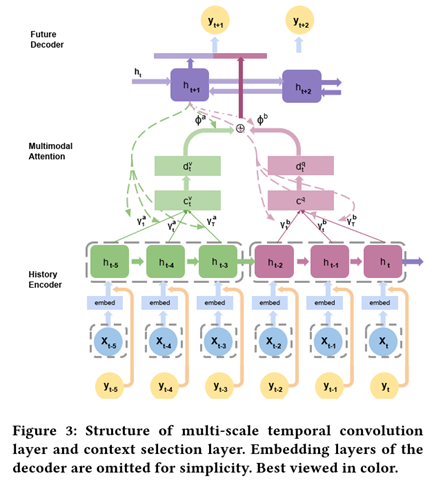
Time-Series Anomaly Detection Service at Microso
Spectral Residual (SR) +CNN
The Spectral Residual (SR) algorithm consists of three major steps:
- Fourier Transform to get the log amplitude spectrum;
- calculation of spectral residual;
- Inverse Fourier Transform that transforms the sequence back to spatial domain.
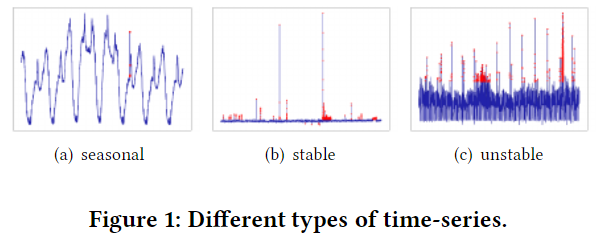
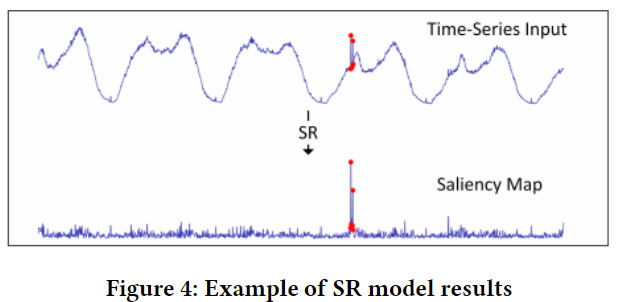

Personalized Purchase Prediction of Market Baskets with Wasserstein-Based Sequence Matching
KNN-SDTW选最相似的用户历史
Wasserstein distance作为衡量
Meta Learning with Relational Information for Short Sequences
learning heterogeneous point process models from short event sequence data along with a relational network.
hierarchical Bayesian mixture Hawkes process model
capture the underlying mixed-community patterns of the relational network, which simultaneously encourages knowledge sharing among sequences and facilitates adaptive learning for each individual sequence
Many existing literature considers medium-length or long sequences. They first model a sequence as a parametric point process, e.g., Poisson process, Hawkes process or their neural variants, and apply maximum likelihood estimation to find the optimal parameters
across the communities the variation of the subjects is large, while within the communities the variation is small
in a social network, each user often has multiple identities
Motivated by above facts, we model each sequence as a hierarchical Bayesian mixture of
Hawkes processes
the weights of each Hawkes process are determined jointly by the hidden pattern of sequences and the relational information, e.g., social graphs.
make no assumption on the prior distribution of the parameters of Hawkes process
Hawkes processes:
self-exciting, i.e., the past events always increase the chance of arrivals of new events.
Model-Agnostic Meta Learning:
exploit the shared structure of the tasks, to obtain models that can perform well on each of the tasks. Specifically, MAML seeks to train a common model for all tasks.
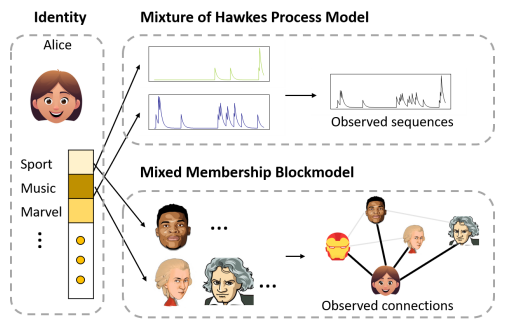
Time-series Generative Adversarial Networks
autoregressive 分布+temporal 分布
global:
local(step-wise):
S是静态特征
S generator,RNN generator
GRU-ODE-Bayes: Continuous modeling of sporadically-observed time series
连续时间GRU
Bayesian update network that processes the sporadic observations


Latent ODEs for Irregularly-Sampled Time Series
Recurrent neural networks (RNNs) are the dominant model class for high-dimensional, regularly-sampled time series data, such as text or speech. However, they are an awkward fit for irregularly-sampled time series data, common in medical or business settings. A standard trick for applying RNNs to irregular time series is to divide the timeline into equally-sized intervals, and impute or aggregate observations using averages. Such preprocessing destroys information, particularly about the timing of measurements, which can be informative about latent variables
An approach which better matches reality is to construct a continuous-time model with a latent state defined at all times. Recently, steps have been taken in this direction, defining RNNs with continuous dynamics given by a simple exponential decay between observations
we further augment Latent ODEs to jointly model times of observations using a Poisson process.
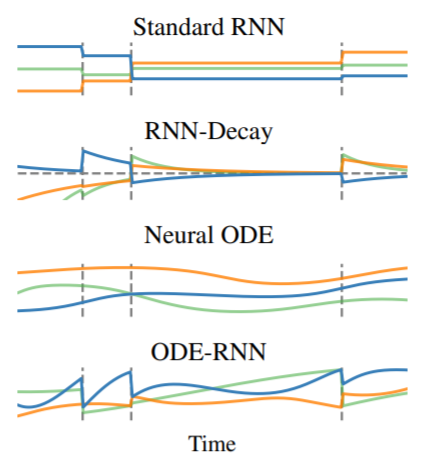
DTWNet: a Dynamic Time Warping Network
Doppler
invariance
DTW not only outputs the distance value, but also reveals how two sequences are
aligned against each other.

Streaming Version of DTW
Unsupervised Scalable Representation Learning for Multivariate Time Series
只用看相关工作
Think Globally, Act Locally: A Deep Neural Network Approach to High-Dimensional Time Series
Forecasting
LeveledInit: Handling Diverse Scales with TCN
global TCN-MF(TCN+矩阵分解) model + local per time-series properties
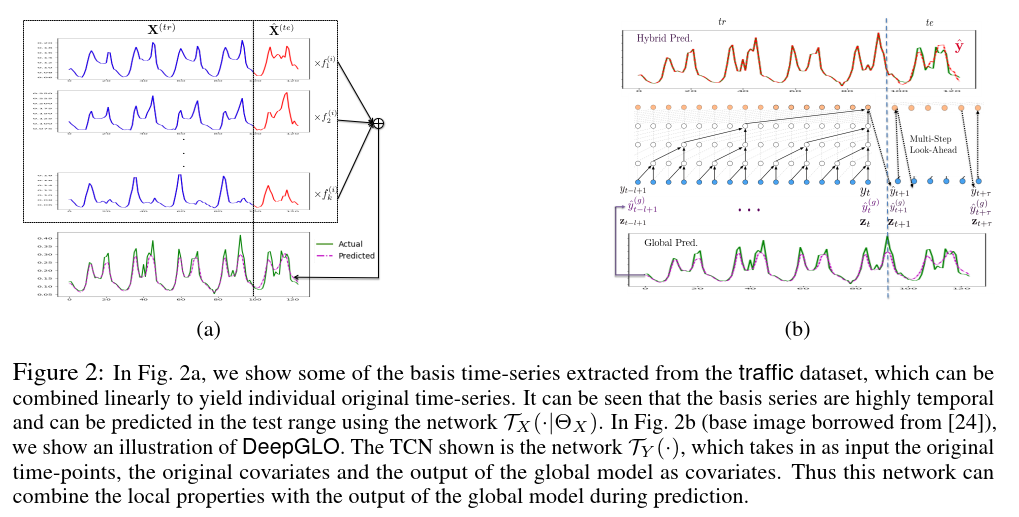
Fully Neural Network based Model for General Temporal Point Processes
神经网络泛化表示hazard function(integral of the intensity function)
Tensorized LSTM with Adaptive Shared Memory for Learning Trends in Multivariate Time Series
多任务共享,学习trend



Deep Unsupervised Binary Coding Networks for Multivariate Time Series Retrieval
判断时间序列相似:
- DTW
- 傅里叶变换
- 小波分解
- Piecewise Aggregate Approximation (PAA)
- Locality Sensitive Hashing (LSH)
- Sketch, Single, & Hash (SSH)
- DeepBit and Hash-GAN, have been employed to learn binary representations
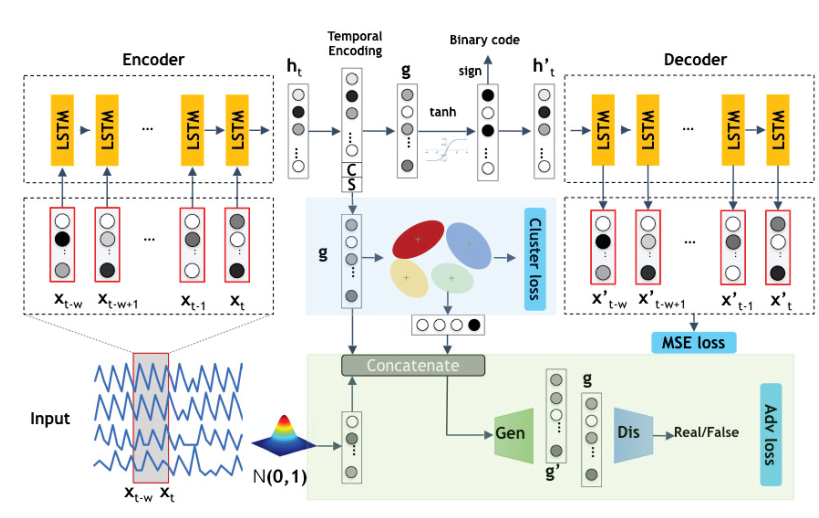
cluster使用KL距离
对抗是因为聚类可能会过拟合
Time2Graph: Revisiting Time Series Modeling with Dynamic Shapelets
learn the representations of a time series by extracting time-aware shapelets and constructing a shapelet evolution graph
DTW计算segment和shapelets的相似度,K个候选shapelets
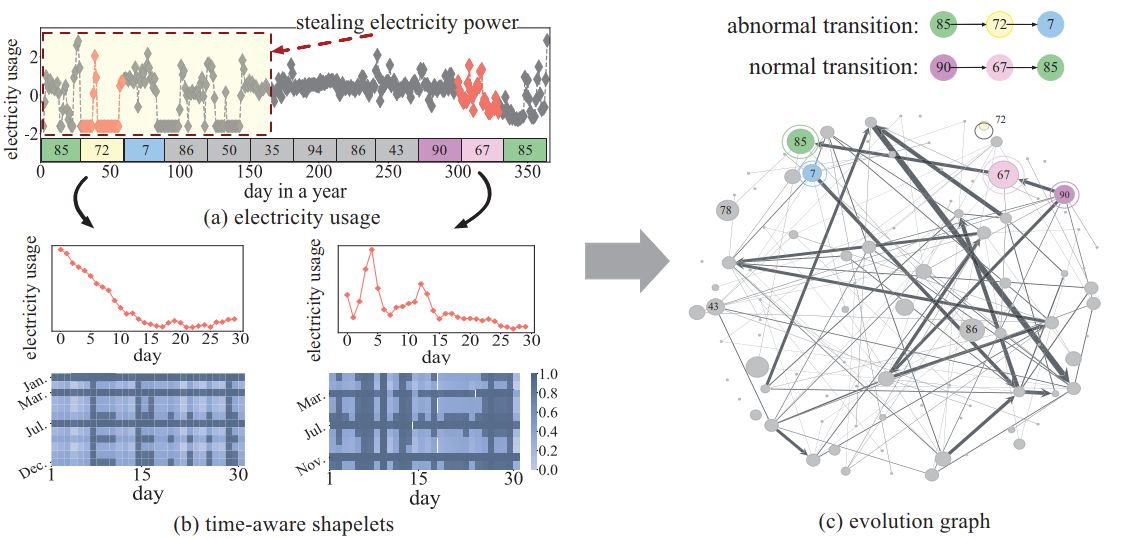
Relation Inference among Sensor Time Series in Smart Buildings with Metric Learning
Similarity Metric Learning for Time Series:
- DTW
- Deep Expected Alignment Distance (DECADE)
- Warping Networks (WN)
- Hidden Markov Model (HMM)
- Markovian Event Model (MEMO)
- Siamese network
短时傅里叶变换+Triple net判断相似性

Block Hankel Tensor ARIMA for Multiple Short Time Series Forecasting
使用多路延迟MDT把time series矩阵转换为a high-order block Hankel tensor,which represents all the TS at each time point as a tensor in a high-dimensional embedded space.
高阶Hankel假设有 low-rank or smooth manifold in the embedded space
然后使用low-rank Tucker decomposition分解出core tensor,在core tensor上使用ARIMA
最后inverse Tucker decomposition and inverse MDT还原
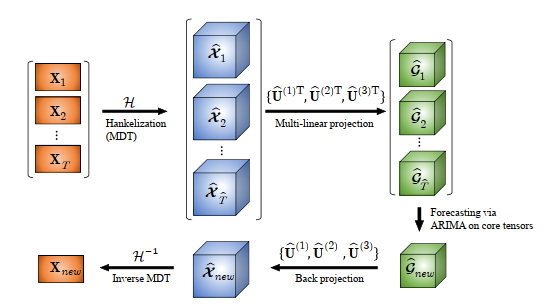
Joint Modeling of Local and Global Temporal Dynamics for Multivariate Time Series Forecasting with Missing Values
使用local(统计信息,Last Observation)+Global(local作为key去query,记忆网络)
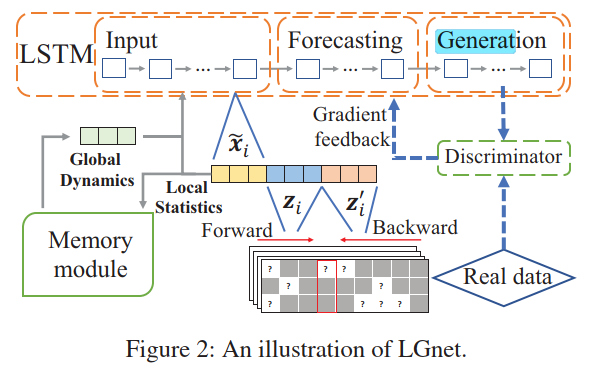
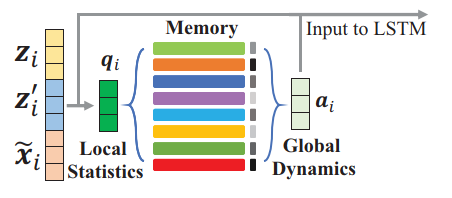
TapNet: Multivariate Time Series Classification with Attentional Prototypical Network


Partial Correlation-based Attention for Multivariate Time Series Forecasting
